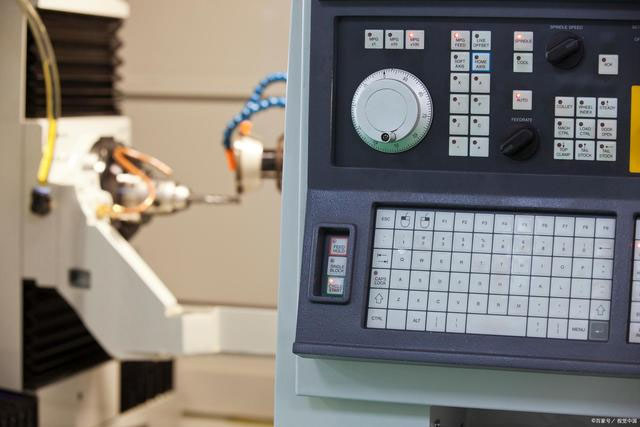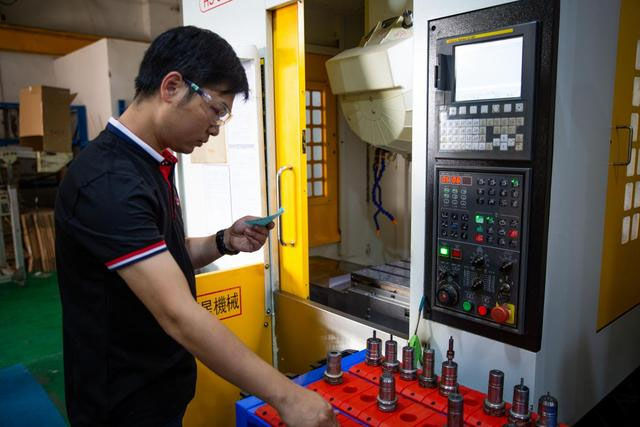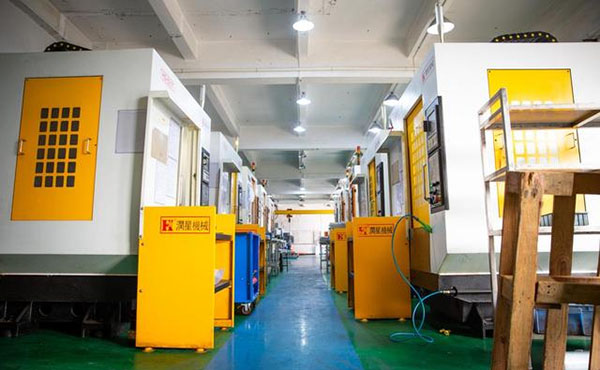Numerically controlled (CNC) machining is a manufacturing process that many industries have incorporated into their manufacturing processes. This is because the use of CNC machines can increase production. It also allows for a wider range of applications than manually operated machinery.
The operation of the CNC process contrasts, and thus replaces, the limitations of manual machining, which requires the field operator to prompt and guide the commands of the machining tool through levers, buttons, and handwheels. To the onlooker, a CNC system may resemble a regular set of computer components.

How does CNC machining work?
When the CNC system is activated, the required machining dimensions are programmed into the software and assigned to the corresponding tools and machines, which perform the assigned dimensioning tasks, just like robots.
In CNC programming, code generators in digital systems often assume that the mechanism is flawless, although there is a possibility of error, which is more likely when the CNC machine is instructed to cut in multiple directions at the same time. The placement of tools in the CNC is outlined by a series of inputs called part programs.
Using a CNC machine, input the program through punch cards. In contrast, programs for CNC machine tools are entered into a computer via a keypad. CNC programming remains in the computer's memory. The code itself is written and edited by programmers. Therefore, CNC systems offer a wider range of computing capabilities. Most importantly, CNC systems are by no means static, as updated prompts can be added to pre-existing programs by modifying the code.

CNC machine programming
In CNC manufacturing, machines are operated through numerical control, in which a software program is specified to control objects. The language behind CNC machining, also known as G-code, is used to control various behaviors of the corresponding machine, such as speed, feed rate, and coordination.
Basically, CNC machining pre-programs the speed and position of machine functions and runs them through software in repetitive, predictable cycles with little or no human intervention. During CNC machining, 2D or 3D CAD drawings are conceived and then converted into computer code for execution by the CNC system. After entering the program, the operator test-runs it to make sure there are no errors in the coding.
Thanks to these capabilities, the process has been adopted in all corners of the manufacturing industry, with CNC fabrication being especially important in the production of metals and plastics. Learn more about the type of machining system used and how CNC machine programming can fully automate CNC manufacturing below:

Open/Closed Loop Machining Systems
In CNC manufacturing, position control is determined by an open or closed loop system. For the former, the signal runs in a single direction between the CNC and the motor. In a closed-loop system, the controller is able to receive feedback, which makes error correction possible. Thus, the closed-loop system can correct for speed and position irregularities.
In CNC machining, motion is usually directed to the X and Y axes. In turn, the tool is positioned and guided by stepper or servo motors that replicate the precise motion determined by the G-code. If the force and velocity are minimal, the process can be run with open loop control. For everything else, closed-loop control of the speed, consistency, and precision required to process manufacturing, such as metal products, is necessary.
CNC machining is fully automatic
In today's CNC protocols, the production of parts via pre-programmed software is mostly automated. Use computer-aided design (CAD) software to set the dimensions of a given part, then use computer-aided manufacturing (CAM) software to convert it into an actual finished product.
Any given workpiece may require various machine tools, such as drills and cutters. To meet these needs, many of today's machines combine several different functions into a single unit.
Alternatively, a unit might consist of multiple machines and a set of robots that move parts from one application to another, but everything is controlled by the same program. Regardless of the setup, CNC machining enables standardization of part production that is difficult with manual machining.
Different types of CNC machines
The earliest CNC machines date back to the 1940s, when electric motors were first used to control the motion of existing tools. As technology advanced, these mechanisms were augmented by analog and eventually digital computers, leading to the rise of CNC machining.
CNC milling machine
CNC mills are capable of running programs consisting of numeric and alphanumeric cues that guide the workpiece across different distances. Programming for a milling machine can be based on G-code or some unique language developed by the manufacturing team. Basic milling machines consist of a three-axis system (X, Y, and Z), but most mills have three axes.
Lathe
With the help of CNC technology, the lathe can cut with high precision and high speed. CNC lathes are used for complex machining that is difficult to achieve on normal machine versions. In general, the control functions of CNC milling machines and lathes are similar. Like CNC milling machines, lathes can also be run with g-code control or other code for the lathe. However, most CNC lathes consist of two axes - X and Z.
Since a CNC machine can install many other tools and components, you can trust it to produce an almost unlimited variety of goods quickly and accurately. For example, when complex cuts need to be made on a workpiece at different levels and angles, it can all be done in minutes on a CNC machine.
As long as the machine is programmed with the correct code, the cnc machine will follow the steps instructed by the software. Assuming everything is programmed according to the blueprints, once the process is complete, there will be a product with details and technical value.
Post time: Apr-25-2022
